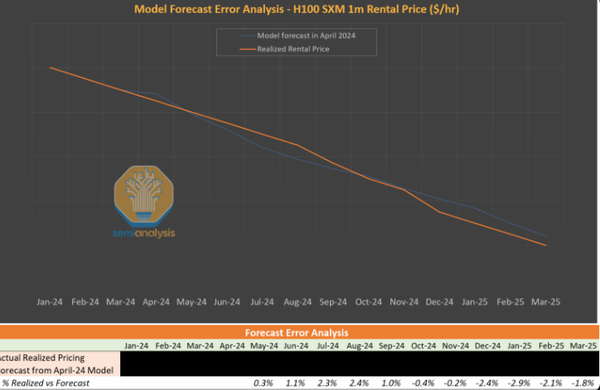Full Analysis: Impeachment, US China Trade War, Hong Kong, Fed, Brexit, Oh My!

We can look at the stock market two ways, from the bottom up or from the top down. I spend most of my time and writing focusing on bottom up analysis, meaning that I focus on individual stocks and analyze them both individually and collectively. You’ll see that, for example, in my Latest Positions pieces which I sometimes open with analysis like this from December 21, 2018, at the very bottom of that late year sell-off:
“Here is a list of my latest positions with updated commentary and ratings for each position. My commentary is much less bearish than it was back when the markets were at their all-time highs in September. And so are the ratings, many of which went higher as prices have gone lower.”
But I also think it’s important to keep an eye on top down analysis, where we focus on valuations and growth of the broader stock market as well as focusing on trends, policies and potential disruptions in the broader economy. And today’s piece is about top down analysis — let’s focus on what’s going in the economy and the political world and broader market valuations to make sure we’re not whistling past any upcoming graveyards, so to speak.
Here are the issues that have been dominating our business headlines for the last few weeks and/or months (and/or years in Brexit’s case and/or decades in the Fed’s case):
China Trade War – This is by far the most important factor to consider in our top down analysis. As I’ve written since Trump fired the first meaningful shot from the US side in the China Trade War, we have to be aware of not just the tariffs or impact on supply chains and confidence because of the escalated China Trade War, but also of the potential Black Swans from friendly fire, fog of war and other unintended consequences that always come from war. There’s no doubt that tariffs have hurt profits though that pain has been offset by the Trump administration’s tax cuts and giveaways for corporations. There’s also no doubt that there’s starting to be some measurable impact on business investing and C-suite confidence as the trade war wears on. Most executives of major global companies believe that the trade war is necessary but that we’ll likely get a resolution of some sort before the next election. But we have to wonder what unintended consequences are already set in motion. Will the slow down in business investment, global trade and supply chain disruptions be temporary or will they feed themselves into a US and global recession? What other unintended consequences are being created by trade-war-analogy friendly fire and fog of war concepts, ie is Russia benefiting from the US-China Trade War in ways that will haunt us later? Are Chinese companies figuring out long-term workarounds to US-based and/or US-created technologies?
Hong Kong (and by extension, Taiwan) – The relentless protests by those in Hong Kong who want to live under some sort of semblance of Western rule of law are a potential Black Swan. If China were to get violently aggressive in trying to shut down the protests as the world is watching, it would derail any chance of getting to a resolution in the US China Trade War. I think China is hoping that the world’s attention will move on from these protests in the next few weeks and that, without widely-consumed international coverage of the Hong Kong protests, the protests will grow smaller and insignificant over time. If that doesn’t happen, I’d expect that China will get a resolution to the US China Trade War signed asap and then would probably try to make one big crack down to shut down the protests in Hong Kong. We will also learn more about how China is going to try to handle Taiwan in coming years from this Hong Kong issue today. The big Black Swan risk here is that if China were to crack down with violence and guns on the protestors and then the US would have to not only shut down talks about resolving the US China Trade War, but other sanctions and tensions would quickly rise between the Western world and China.
The IPO Bust – It’s quite clear now that Softbank and others venture capitalists overvalued some of their unicorns and the public markets are sorting out some more reasonable valuations. Look at the companies that Softbank has been involved in that have come or tried to come public in the last few months: Uber, which Softbank once valued at $72 billion, came public at about a $75 billion valuation in May and is currently worth $53 billion. And how about WeWork, which is being bailed out by its investors like Softbank and JP Morgan right now, to avoid having to mark the equity investment there down to an outright zero $0. Slack, another Softbank investment, is down about 50% from where it traded the first day it came public. Other IPOs have likewise been pretty much busts for the last few months, including Peloton, Crowdstrike, Chewy, Lyft. Even the IPOs that aren’t outright busts have seen their stock prices drop 30-50% from recent highs, including Beyond Meat, Pinterest, Zoom. IPOs are getting to have a dirty name again and that might mean opportunity. We should probably be buying some of the best of breed of the recent IPOs while they’re all being hated on by traders and investors. I own Uber and Slack (WORK, worst ticker ever) already and added to the positions during the recent IPO/market sell-offs. I also like ZM but I’m not comfortable with its valuation here. Interestingly but not surprisingly, I find the IPO bust to be a bullish thing, not a bearish thing.
Fed – The Fed’s back in a full-fledged cutting cycle, despite bank and corporate profits and buybacks being at all-time highs. President Trump is vocal about wanting more easing and cuts and monetary stimulus from the Fed (maybe that’s part of the motivation behind these repo purchases that the Fed’s started doing in big size lately — stealth easing to appease President Trump). I’ve long considered getting much more defensive when the Fed switches to an easing cycle from a contraction cycle but I’ve hesitated this time in large part for several reasons, the most important being that the US is just about the only developed economy to still offer positive interest rates. Most countries in Europe and Japan and elsewhere around the world are dealing with negative interest rates, meaning that you get less than a dollar back on the dollar for lending those governments money. The only way that even happens is if the governments in each of those respective countries are forcing people, pensions, banks and corporations to invest in government bonds. Those aforementioned people, pensions, banks and corporations in those countries are trying to get every dollar they can over the US and/or other relatively safe havens that still offer positive near-risk-free returns. That means money is flooding the US even as the Fed is entering a cycle to further flood the economy and markets with dollars. This is likely to help asset prices including stocks.
Impeachment – I have to say, that I’m amazed at the amount of attention and coverage the impeachment process gets on a day-to-day and second-to-second basis. Then again, in this hyper-partisan world we live in, no I’m not. Anyway, I just can’t fathom that the Democrats really want to open this can of worms about what’s an acceptable amount of leaning the White House can put on the governments around the world that we send trillions of dollars of so-called aid to every year. We know that Joe Biden leaned on Ukraine to remove a prosecutor — but that’s somehow considered acceptable because it was done under the cover of the UN and others also supposedly leaning on Ukraine to do the same? So are we supposed to believe that it’s okay for an administration to lean on a foreign government before sending them aid from the US taxpayer in some cases, but not in others? Can someone show me where in the Constitution it says that you can lean on foreign governments as long as the UN supposedly agrees with you? Look, I’m not really okay with us sending trillions of dollars of aid to corrupt foreign governments (and aren’t they all corrupt to some extent, and they use the money we send to further their power anyway?), much less leaning on a foreign government in any way once we’ve promised them US taxpayer money. I think it’s clear that both the Democrats and Republicans have been less than Constitutional in their dealings with wars, tax cuts, health care programs, monetary policies and so on, so it seems unlikely to me that there’s enough of a difference between what Trump does versus what Obama and Bush and Clinton and the rest of those in power have been doing for decades for this impeachment process to actually end up removing President Trump from office. The stock markets have so far seemed to be little fazed by the impeachment process, but if the House votes for impeachment, it’s possible the markets fall to price some risk of impeachment in, if only temporarily.
Brexit – As I’ve said all along, whatever form Brexit actually takes when it happens, it won’t be earth-shattering for Britain or the EU. And as I’ve analyzed for years, I’m just not sure that Britain and the EU matter much to our economy or our stock market. I’d rather be short than long British stocks and I just might build up some British stock shorts if the FTSE (British stock market) were to pop 5-10% on a “Brexit deal” actually being announced or something like that.
Stock Market Valuations, growth – Despite the big pullback in high-growth stocks, the valuations of most growth stocks remain quite high. I’d like to buy some of these companies with very high margin businesses that are growing at 30-50% per year when they’re trading at less than 10x next year’s sales estimates. Most of the good companies like Slack and Zoom are still trading at 12x and 20x next year’s sales estimates respectively. NFLX and Amazon and other FANG-like high growth mega cap stocks are growing 20-30% per year and are trading at 3-5x next year’s sales estimates. So-called value stocks and the broader stock market look like they’re at the mid-to-high-end of their valuation range, which means that earnings growth will probably need to rebound from the last two quarters’ relative mundane results over the next twelve months to keep these prices and/or take the markets higher. That said, the aforementioned fact that there’s so much money looking for positive returns coming to the USA and the Fed’s cutting cycle and other factors can keep stock prices elevated for the short-to-mid- term too.
Summary – Back in late 2007, I got very bearish and closed my hedge fund and went to become a TV anchor in large part because I was so worried about real estate and all the crappy/fraudulent real estate products that the banks were loaded up on. Obviously, my top down analysis back then focused on the real estate crisis that I was sure was about to hit. I don’t see that or anything quite that disruptive right here right now. I think most of the above factors will work themselves out relatively peacefully and that it’d be a mistake to try to bet on one of those factors not working out just now. That said, I clearly have some hedges and some defensiveness because the possibilities of these issues becoming Black Swans is real.
I guess I’ll wrap up in a similar manner to most of the articles I’ve written about top down analysis in the last decade: Be cool, be calm, be contrarian, be vigilant. Invest in great Revolutionary companies and try do buy them when they’re relatively cheap.
Finally here are some recent shots from my iPhone of my two daughters, to help us remember what’s really important anyway.







